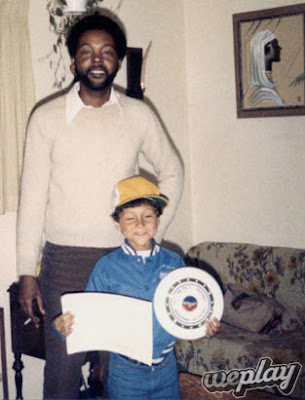 Leandro Erlich
Leandro Erlich
Lately I've been turning over a relationship in my mind: how does the spatial dimension of a work of art change the way in which the idea behind it is expressed? The most interesting pieces (for me) fall somewhere in between the dimensions in some way, either through the experience of the work, or the work's direct affront to the spatial dimension it inhabits. This is not about time being the 4th dimension or some shit, though I'm sure you're science teacher in high school told you that. He was right, according to most scientific theory, but I'm talking about something else: spatial dimensions and our perceptions of such.
--Of course, every thing is in the third dimension, namely because it's impossible to see a 2D object at all. But let's assume that paper/drawings represent 2D, and speak within conventions for a moment.---To battle the perceptions of a given dimension and make strides into the adjacent is an incredibly interesting one for me, as most artistic conventions divide the dimensions relatively strictly. Drawing is representative, Sculpture is plastic. But when a work falls between the two definitions, what do you call it?

The piece here is by Chris Duncan, and to me represents the first step towards the third dimension in the way it implies a depth to the drawing itself, without being a representation of any
thing that has depth to it. The page itself is pushed beyond a surface. And beyond the skills used here, other implications of the physical world - like gravity - can shove a canvas into the space.

I love the distinct shift from taught (almost invisible) canvas at the top of the frame to the heavy, drooping materiality at the bottom. This work, unfortunately, is unknown to me (found at
threedot). It only focuses on the subject matter of exhibition itself - no "content" on the page, no title, the viewer's usual spot taken up by the necessary broom. Is this sculpture? or some assisted painting, or something like that?

Materiality can play a huge role in this as well. The piece above, by Jen Stark, deals with our most 2-D material in our 3D world and unfolds the layers hidden under it, almost pointing out what we're ignoring all the time. The flower-like result is not without it's sharp edges, and I think they're the best part of it. The edges of dimension are what define our perceptions of it, and are impossible to see. We can't
see the edges of the 2nd dimension, because that's the 1st dimension. In a similar way, we can't see the edges of the 3rd dimension, and so on. Sometimes we look for edges in worst places - like edges. But really, the edge is in a new direction, let's say
outward.
 Travess Smalley
Travess SmalleyThe edge of a dimension is really where we can get caught between them. And in a more practical sense, the edge of a piece is what we most usually ignore to suspend out disbelief in the very agreeable silence and calm of
flatness. To deal with the substance of a page is almost too much, it distracts from the content. But there can be another content which over-runs the border and edge of the page into space.
Space can also be flattened, made into a sensory experience devoid of depth, or made so gargantuan that is renders itself into a background. This might be why I'm so fascinated with the sky - It looks at once full of forms and a flat surface inside a curved bowl. But in fact it's a nebulous space that we simply can't experience with any other sense but our eyes. We're so far from it that all we see is a flatness that belies it's depth and almost immateriality.
 Ryoji Ikeda
Ryoji IkedaOnce something is within the purview of space, it can either become an object within that space or an environment of some kind. These environments are where I'm interested in living, the ones that point to the immateriality of the third dimension, the pathetic
roundness that we cling to as our save-all and our larger world. It's not there, in a way. Or, the environment we think we're in is really an object in a larger environment. I'm thinking
Men in Black as I write this.
The immaterial aspects of what we're living in is what's truly amazing, the things that are outside our sensory perceptions and our conceptions of dimension at all. The piece by Richard Box, below, is a tool to see what we can't.

These fluorescent bulbs are powered by the ambient electrical fields surrounding the power lines in the background. But all we can see are the bulbs themselves. In a way, this is the perfect representation of what I'm talking about: a completely invisible but powerful
thing that both makes art and talks about it's medium at the time.

















